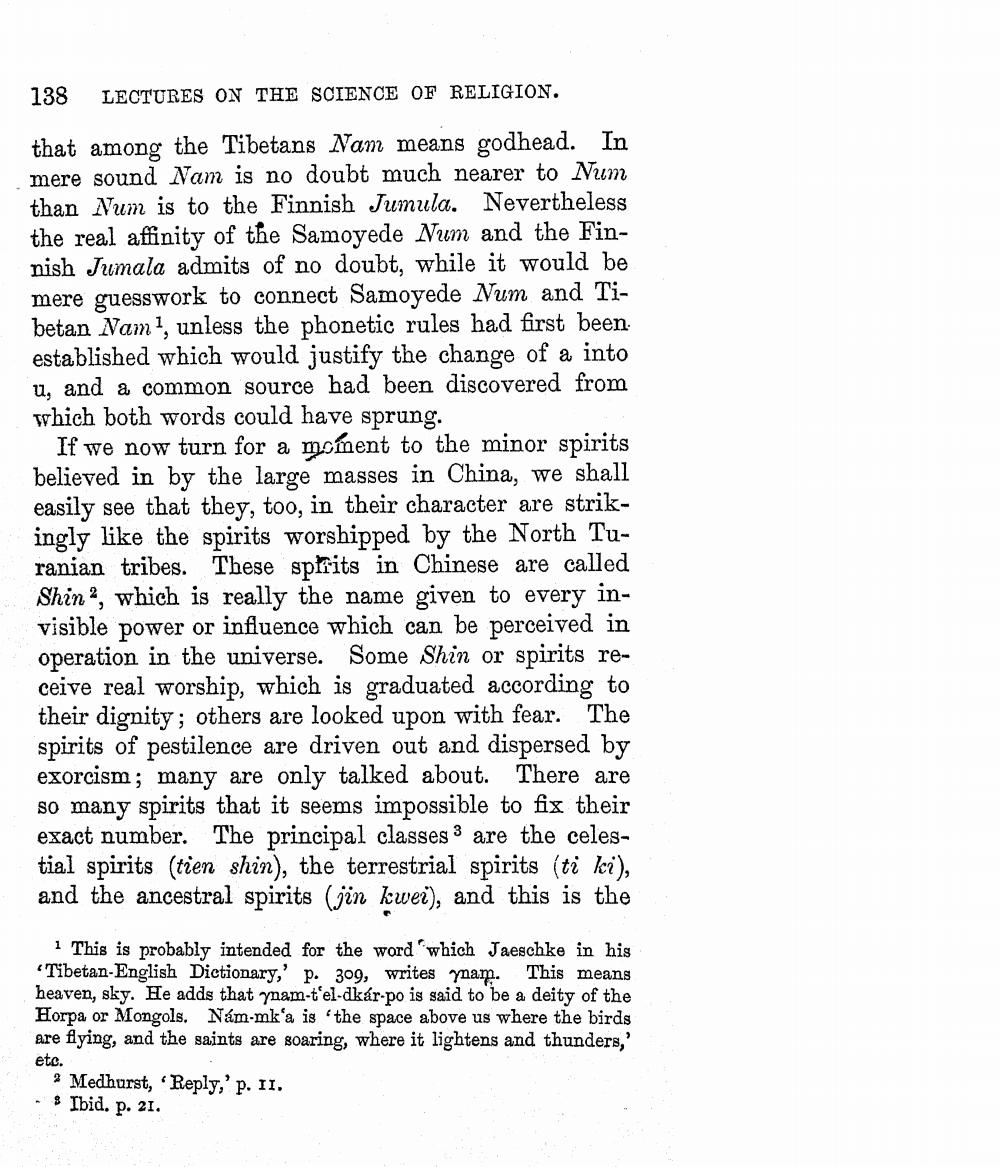________________
138
LECTURES ON THE SCIENCE OF RELIGION.
that among the Tibetans Nam means godhead. In mere sound Nam is no doubt much nearer to Num than Num is to the Finnish Jumula. Nevertheless the real affinity of the Samoyede Num and the Finnish Jumala admits of no doubt, while it would be mere guesswork to connect Samoyede Num and Tibetan Nam?, unless the phonetic rules had first been established which would justify the change of a into u, and a common source had been discovered from which both words could have sprung.
If we now turn for a moment to the minor spirits believed in by the large masses in China, we shall easily see that they, too, in their character are strikingly like the spirits worshipped by the North Turanian tribes. These sprits in Chinese are called Shina, which is really the name given to every invisible power or influence which can be perceived in operation in the universe. Some Shin or spirits receive real worship, which is graduated according to their dignity; others are looked upon with fear. The spirits of pestilence are driven out and dispersed by exorcism; many are only talked about. There are so many spirits that it seems impossible to fix their exact number. The principal classes 3 are the celestial spirits (tien shin), the terrestrial spirits (ti ki), and the ancestral spirits (jin kwei), and this is the
1 This is probably intended for the word which Jaeschke in his Tibetan-English Dictionary,' p. 309, writes yam. This means heaven, sky. He adds that mam-t'el-dkár-po is said to be a deity of the Horpa or Mongols. Nám.mk'a is the space above us where the birds are flying, and the saints are soaring, where it lightens and thunders,' eto.
Medhurst, “Reply,' p. II. - Ibid. p. 21.




